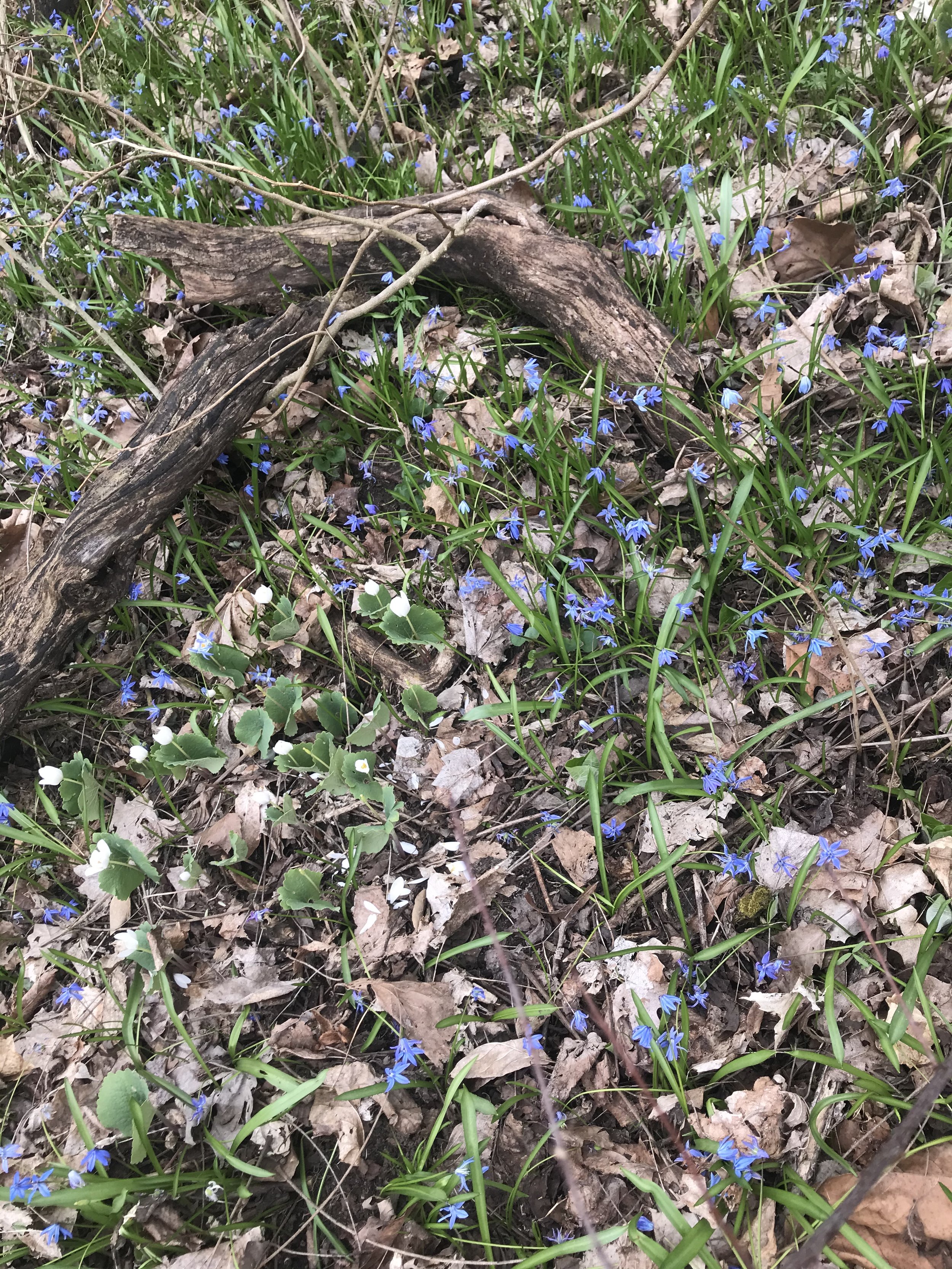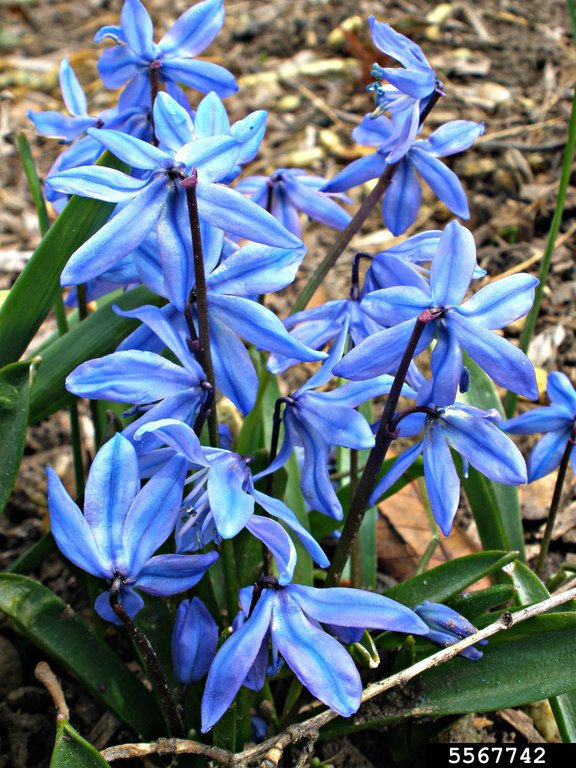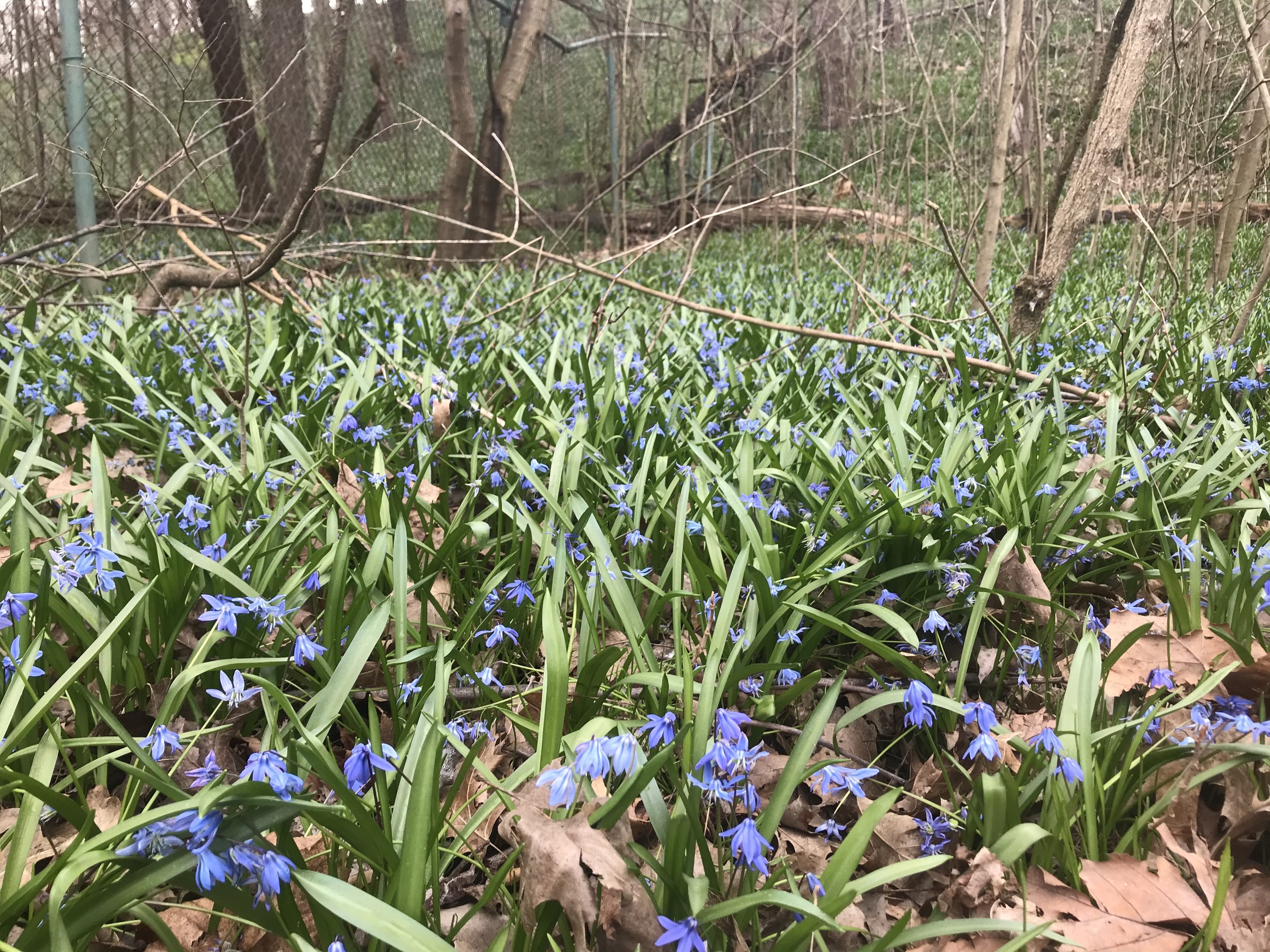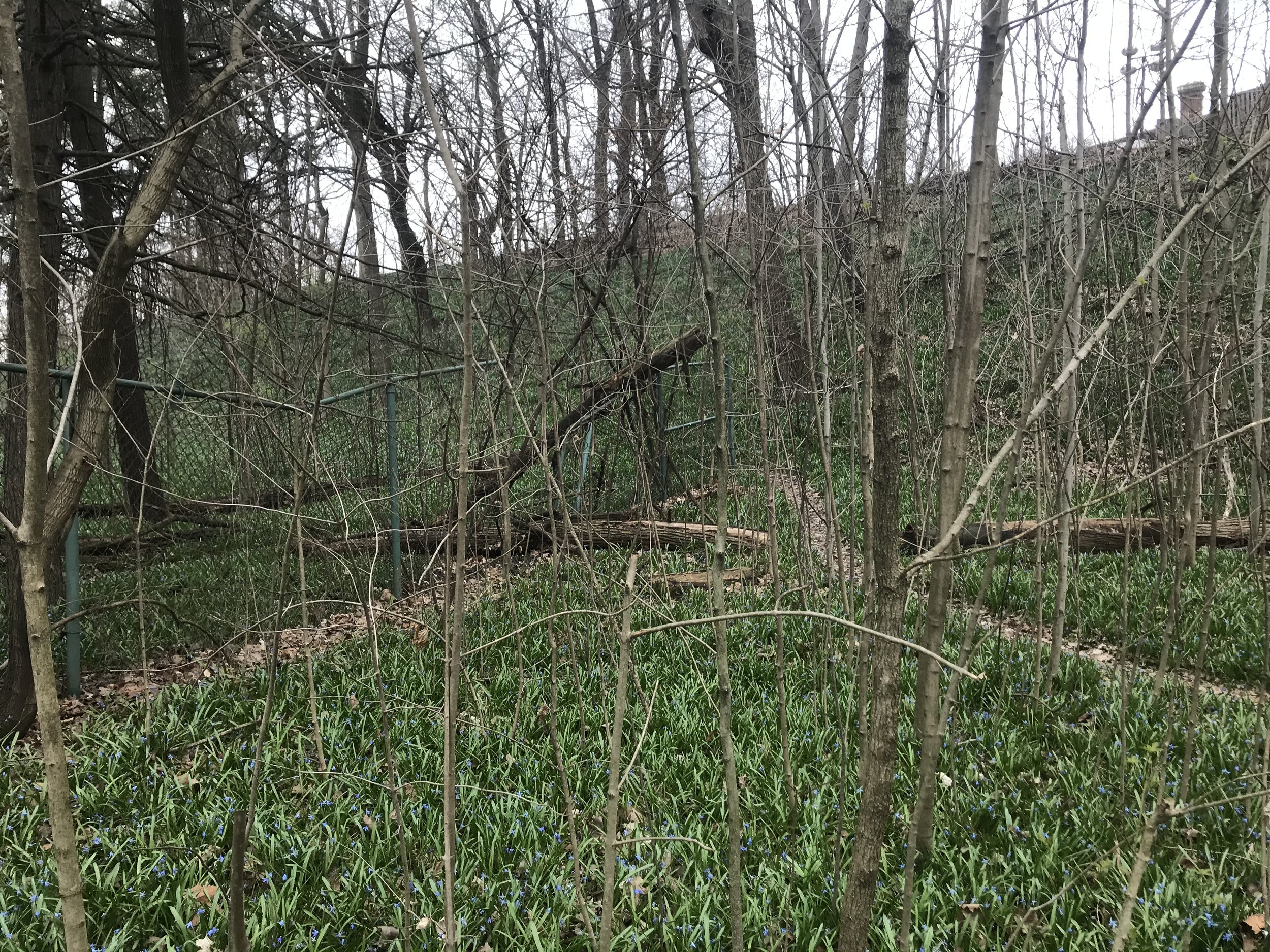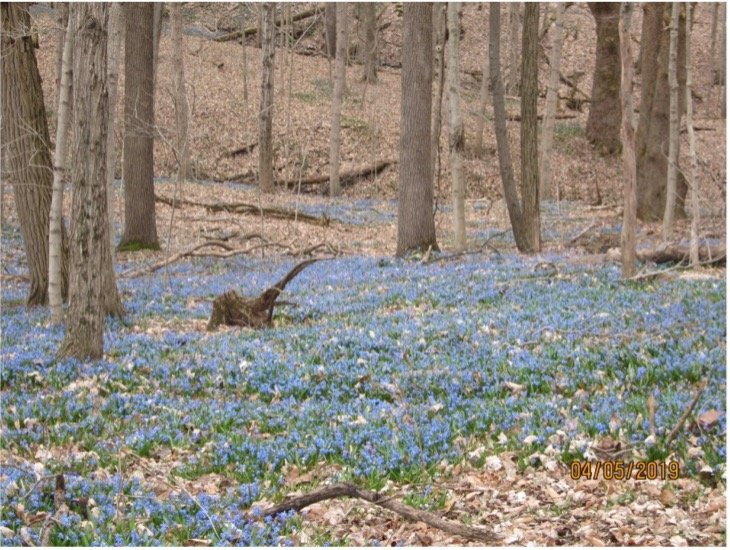Indiana Invasive Species Awareness Week: Siberian Squill (Scilla siberica)
SICIM Email
In honor of Indiana Invasive Species Awareness Week, we are highlighting some lesser known species that you need to be on the lookout for! These species have shown invasive tendencies but we don’t have a clear picture of their distribution in Indiana. If you see any of them growing in natural areas, be sure to report them in EDDMaps so that we can get a clearer understanding of their location and spread.
Siberian squill (Scilla siberica or Othocallis siberica) was brought to North America as an ornamental spring bulb in the late 1700s. It is very hardy and cold tolerant, and its vibrant blue flowers are easy to spot in spring. This invasive spring ephemeral spreads readily into open natural areas forming a hazy blue carpet. As with lesser celandine, Siberian squill forms perennial bulbs that inhibit growth of native vegetation year-round long after its above ground growth goes dormant in late spring to early summer. It is found to escape into natural areas throughout the Northeast, Midwest, and Great Lakes Region of the United States and throughout Eastern Canada. Even though it is known to be invasive, Siberian squill is still available as a spring bulb in the nursery trade.
Siberian squill has upright grass-like leaves which emerge prior to flowering in early spring. One to three flowers are born on arching stalks that reach up to 8 inches tall. Each nodding blue flower is up to an inch-wide, bearing 6 blue tepals (3 petals and 3 sepals) each with a single distinct darker vein in the center. The fragrant blooms can withstand freezing temperatures and generally last for about 2 to 3 weeks. Some varieties have flower colors ranging from white to pink to violet. After flowering, it forms bumpy seed capsules that turn from green to brown upon maturity, splitting open to release dark reddish seeds.
Siberian Squill is commonly planted in residential gardens and yards, from which it can easily spread into neighboring natural areas. It is very tolerant of late cold snaps and freezing temperatures and is avoided by native herbivores, giving it a competitive advantage to our native spring wildflowers. It favors disturbance, resprouting from bulblets broken off or left in the soil after digging. Once established, squill outcompetes native vegetation and is hard to remove. It prefers moist soil in part to full sun, including open woods or wooded edges, roadsides, gardens and grassy yards.
Siberian squill may be mistaken for our native wild hyacinth (Camassia scilloides) since both bloom around the same time, have 6 tepals, and can have purple to white flowers. To differentiate between the two, wild hyacinth can grow 12 inches or more in height, has floppy leaves, and a spike-like cluster of numerous flowers with several indistinct veins on each tepal (petal or sepal).
The first step in the management of Siberian squill is to stop planting this invasive bulb in landscapes and working to remove it from existing plantings. It is possible to dig out and destroy bulbs in smaller areas, though it's likely that bulblets will be left behind in the soil. Mow after bloom to remove seed heads and reduce spreading by seed. For larger areas, chemical control with systemic herbicide such as glyphosate may provide some degree of success, but will likely need more than one application. Be sure to time any chemical treatment for warmer sunny days in late winter to early spring. Due to its ephemeral growth period, the control window for Siberian squill is limited. Repeated control and monitoring will be necessary in spring each year for long term success.
IMPORTANT: The pesticide label is the law! When using any chemical control, always read the entire pesticide label carefully, follow all mixing and application instructions and use all personal protective gear and clothing specified. Contact the Office of Indiana State Chemist (OISC) for additional pesticide use requirements, restrictions or recommendations.
INDIANA NATIVE ALTERNATIVES: bloodroot (Sanguinaria canadensis), celandine poppy (Stylophorum diphyllum), dwarf crested iris (Iris cristata), sharp-lobed hepatica (Hepatica nobilis), Virginia bluebells (Mertensia virginica), tall bellflower (Campanula americana), wild columbine (Aquilegia canadensis), wild geranium (Geranium maculatum), wild ginger (Asarum canadense), wild hyacinth (Camassia scilloides), woodland phlox (Phlox divaricata)
If you find Siberian Squill outside of a landscape setting, please report it via EddMaps either through the app or their website: www.eddmaps.org/indiana. It is a spring ephemeral, so it will be emerging in very early spring, and tends to emerge about the same time as Bloodroot.
If you have been wanting to use EDDMaps but haven’t had the chance to learn, here are a couple virtual events coming up to hone your skills:
North American Invasive Species Management Association (NAISMA): 2022 EDDMapS Summit, March 23rd
National Invasive Species Awareness Week (NISAW) webinar: Let’s Use Eddmaps: Invasives Species Identification and Reporting Training, March 2nd
References and for more information on Siberian Squill
https://extension.umn.edu/identify-invasive-species/squill
https://www.minnesotawildflowers.info/flower/siberian-squill
http://www.illinoiswildflowers.info/weeds/plants/sb_squill.htm
Photo credits:
Flowers: Ansel Oommen, Bugwood.org
Squill crowding out bloodroot, flowers and leaves, and invading a bluff: Stephanie Schuck, SICIM
Siberian squill along a wooded pathway: Iowa State University, Extension and Outreach, Horticulture and Home Pest News, hortnews.extension.iastate.edu
Siberian squill invading open woodland understory. Photo by ©2010 Dan Ondler Minnesota Wildflowers, www.minnesotawildflowers.info
Distribution map Courtesy of EDDMapS. 2021. Early Detection & Distribution Mapping System. The University of Georgia -Center for Invasive Species and Ecosystem Health. Available online at https://www.eddmaps.org/distribution/uscounty.cfm?sub=17359

